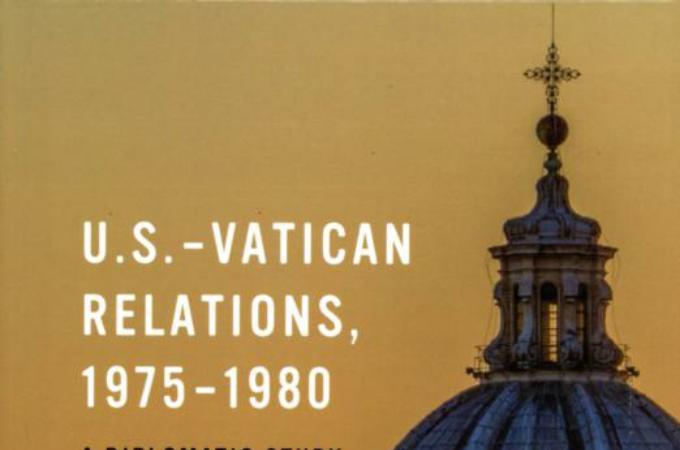New history book looks at U.S.-Vatican relations at the crossroads
"U.S.-Vatican Relations, 1975-1980: A Diplomatic Study" by P. Peter Sarros. University of Notre Dame Press (Notre Dame, Indiana, 2020). 452 pp., $50.
American history is replete with concerns about the pope and the Vatican. From colonial times to well into the 20th century, many Americans feared the pope and his "Jesuit minions" had diabolical plans to corrupt American liberties.
Political leaders openly questioned the patriotism of American Catholics. Could they be loyal to both church and country? Could a Catholic become president of the United States? It was no small challenge for John F. Kennedy to convince the nation that he fully embraced the separation of church and state.
Kennedy's election to the presidency in 1960 was an important milestone in relations between the United States and the Vatican. Communications had begun quietly in the late 1930s with the appointment by President Franklin Roosevelt of a personal envoy to Pope Pius XII. Not surprisingly, the Vatican became an important center of diplomatic information during World War II.
Diplomatic relations continued to improve over the next three decades and culminated in 1984 with formal diplomatic recognition by the two nations and the exchange of ambassadors. This achievement was built on the strong personal relationship between St. John Paul II and President Ronald Reagan.
P. Peter Sarros was present for the evolution of those relations during five critical years in the 1970s. From 1975 to 1980, he served as charge d' affaires and ambassador of the Presidential Mission at the Vatican. He captures the wisdom of his experience in a book intended for readers with an interest in the evolution of American diplomacy amid cultural controversy.
It is important to emphasize this book is, as the subtitle notes, a "diplomatic study" and Sarros focuses on consequential international issues that evolved during those five years. Some of the issues will be well-remembered -- the Iran hostage crisis and the Helsinki peace process are two examples. Other issues are less well known -- the return of the crown of St. Stephen to the people of Hungary, for example.
In all, Sarros presents 11 "diplomatic encounters" that illustrate the work he did as an assistant to three presidential envoys representing two U.S. presidents to three popes and the Vatican bureaucracy. In presenting these "vignettes," as he calls them, he draws on official documents that are supplemented by Sarros' personal diaries, notes and other unpublished materials.
What may surprise many readers is that Sarros has little to say about the 1979 visit of St. John Paul to the United States. Although this trip touched the lives of millions of Americans, it was not a trip planned or managed by the Office of the Special Envoy. To be sure, Sarros worked closely with St. John Paul during the early years of his papacy, but not on the trip that contributed so much to the establishment of full diplomatic relations in 1984.
In the years after his service as our representative to the Vatican, Sarros became a diplomat in residence at the Johns Hopkins School of Advanced International Studies and taught diplomacy at George Mason University in Virginia. In writing and publishing this book he extends his knowledge and expertise beyond the classroom to anyone interested in the intersection of history, political science and church history. The book is an excellent capstone to an important career.
- - -
Walch is a historian of American Catholicism and the author of "Parish School" (2016).



















